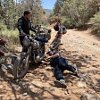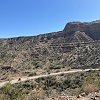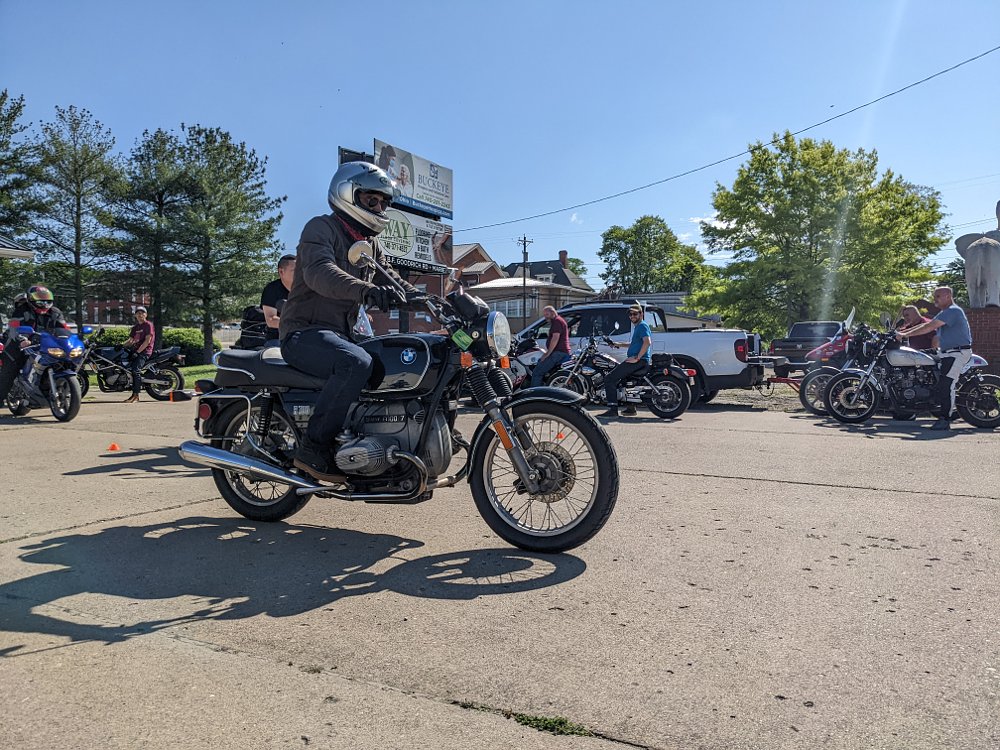Once the fifth or sixth pink tourist Jeep trundled by and we still hadn't seen Anthony, I could tell something was wrong.
I was waiting in a sliver of shade on the rocky Schnebly Hill trail outside of Sedona, Arizona. To my left, Ian tried to extract a hat from his Triumph's primary sprocket (that's another story). To my right, the desert sun radiated off of a sandstone cliff.
Finally, my buddy Anthony rolled down the trail on his Honda CB450. His riding technique was off. Sure enough, a quick look at his Honda's right side revealed a brake pedal that had bent 180 degrees. Now, it rested behind his foot peg.
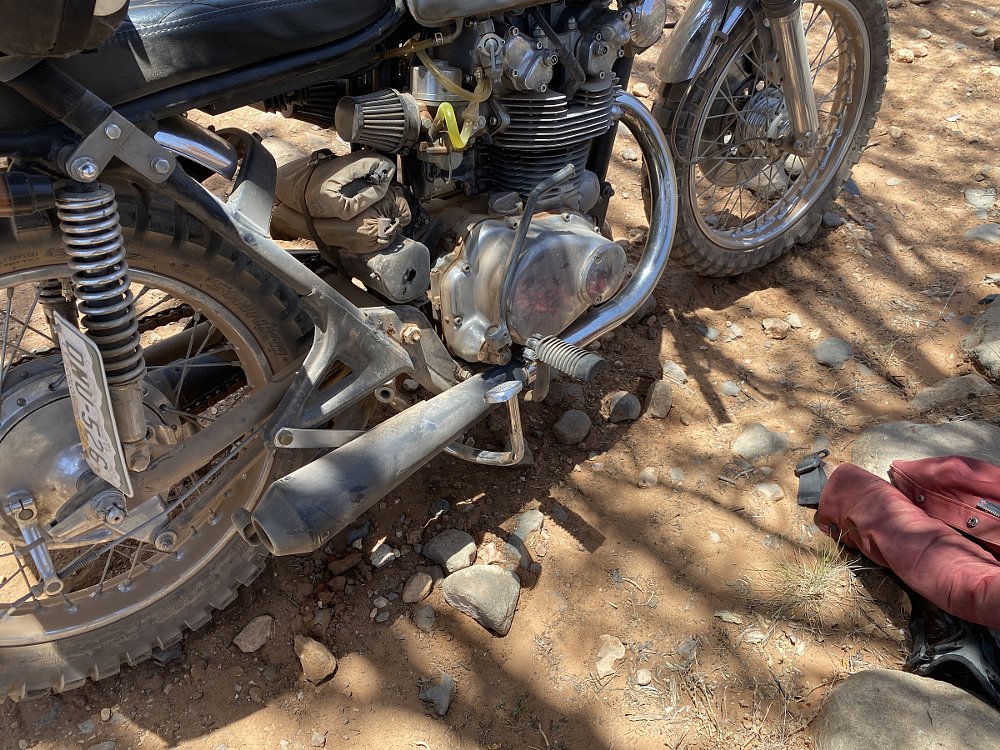
Although it was our first attempt at the Vintage 1000, we were braced for carnage. It was just a bit shocking to have so much go wrong on our first day.
Old bikes, stiff challenge: What could go wrong?
It's sort of a recipe for disaster, if you think about it. While not a race, the Vintage 1000 is a five-day, 1,000-ish mile trek across a mix of dirt roads, Forest Service routes, and other trails, with precious few pavement miles along the way. The bikes must be manufactured before 1981. You carry all of your spares and camping gear. This attracts a certain type of motorcyclist with an affinity for vintage gear, a deft hand at trailside mechanical triage, and an appetite for destruction. These bikes aren't trailer queens.
All of this was dreamed up by Adam and Jamie Sheard, proprietors of Speed Deluxe, a motorcycle shop in Chattanooga, Tennessee, that caters to vintage British bikes. The Vintage 1000 was born in the Blue Ridge Mountains. The first year, Adam recalls, only seven people showed up. The bikes were ill-equipped. One even caught fire. And only a couple riders remained after the first day of rough riding.
But more people kept coming to the Vintage 1000 year after year. Recently, Speed Deluxe expanded the series to include a half-distance Vintage 500, a pre-1968 Vintage 500, and a 1000 in the Western states, as well as the original Tennessee event.
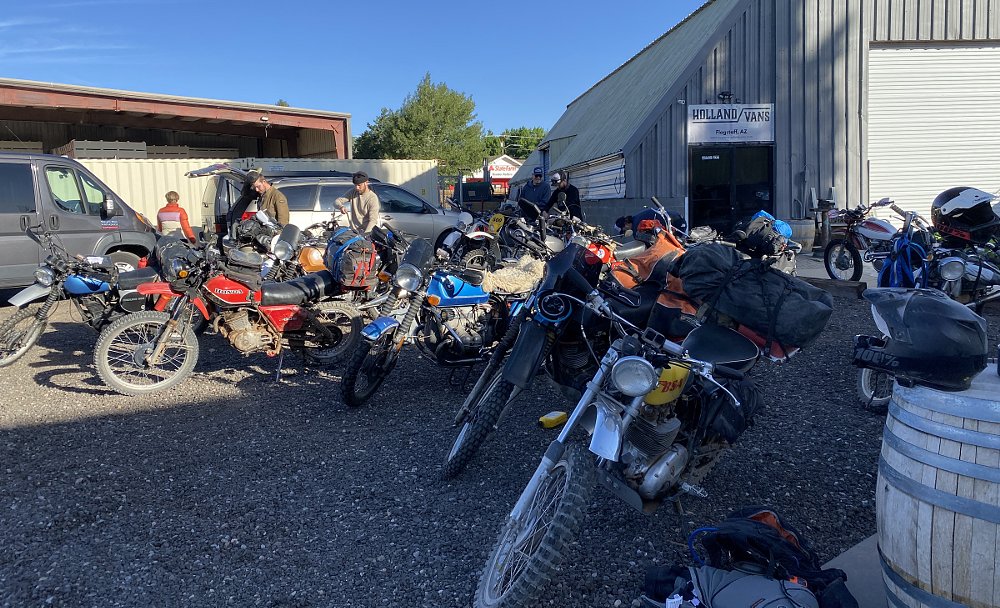
As we stood around the shop at Holland Vans the night before day one of the Arizona Vintage 1000 in late May, it was immediately clear why everyone kept returning to bash their old bikes around on the rocks. It was a tight-knit group, like a college reunion, perhaps. And yet there was no sense of exclusivity. We newcomers were quickly welcomed and given some pointers on how to load our roll charts. Oh yeah, that's another rule — no GPS, just roll-chart turn cues, painstakingly written by hand for all five days.
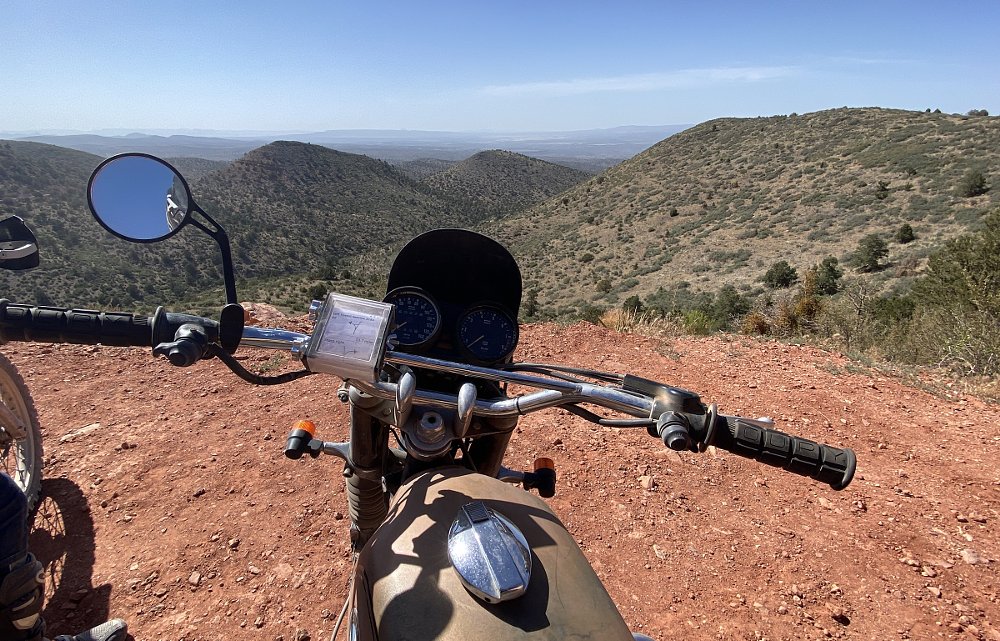
That first morning, after bump-starting our friend Jake's Honda XL250, we set off from Flagstaff, the start of the 2022 Western Vintage 1000. The smooth dirt roads through the Coconino National Forest didn't hint at what awaited us on the 3,000-foot descent into Sedona's red rock desert.
The overlook at the start of Schnebly Hill did not bode well. A couple of four-wheelers and a side-by-side were parked at the top, and they seemed much better suited for the jumbled rocks we could see in only the first few hundred feet of trail.
The roll chart told us to turn, though, so turn we did. I put my 1974 BMW R75/6 into second gear, hoping the big Airhead would just chug along if I picked smart lines. It was no match for the Yamaha XT500s, which are increasingly popular on the Vintage 1000. With the low pipes and shorter-travel suspension, Anthony's 450 was somehow even less appropriate for a trail that was meant for side-by-sides and dirt bikes. By the time he rolled up with that bent brake pedal, muttering "wrong tool for the job," we were all questioning our bike choices, not to mention the fact we'd even paid money for this rocky test of rider and bike.
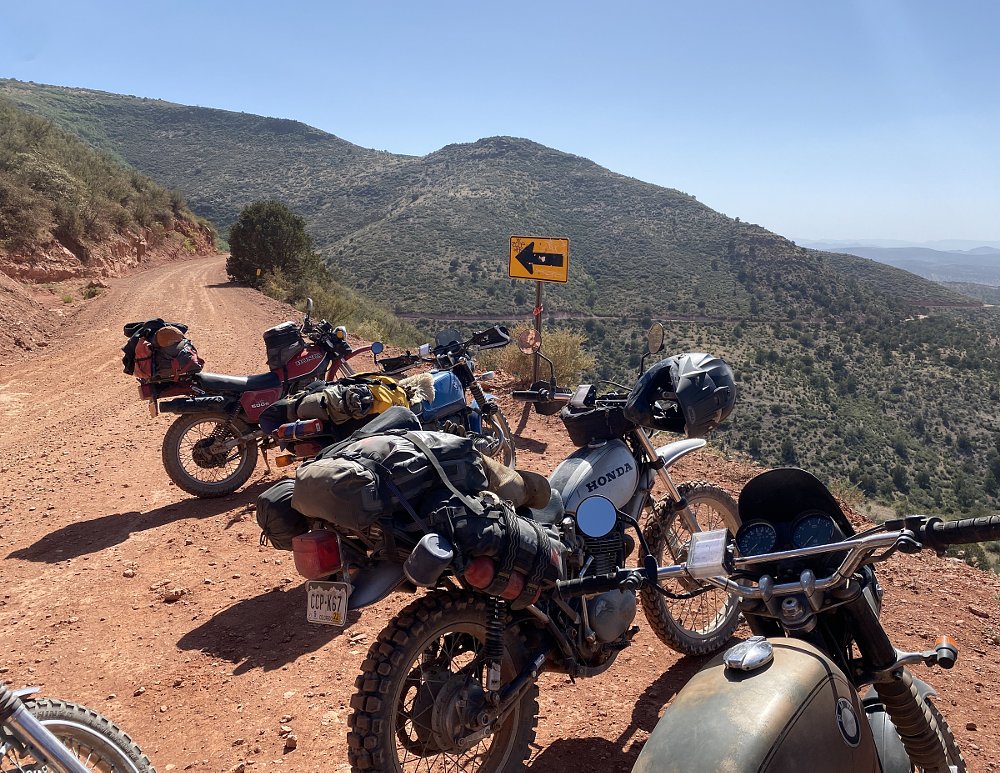
On the other hand, maybe we couldn't have asked for a better indoctrination into the spirit of the Vintage 1000. No matter what happens out on the trails, you find a way to keep on riding. And that's just what we did. With a bit of brute force, we got the brake pedal off. The side stand had to come off, too. And from there, it was a matter of riding technique — more engine braking, early front braking, and a healthy dose of caution. But honestly, that's great advice even if your vintage motorcycle is in perfect working order.
The rest of day one rewarded us for our perseverance. We enjoyed a beautiful, twisting (gasp, paved!) climb up to Jerome, "the billion-dollar copper claim," a road sign boasted. We carried on past the tourists, bachelor parties, and the Gold King ghost town, then down a spectacular Forest Service Road overlooking Sedona's desert valley.
Descending into Prescott Valley, our first day in the saddle had one more surprise in store. An innocent tip-over on the side of the trail put a hole in the left cover of Anthony’s engine. While we were inexperienced with the Vintage 1000, we weren't unprepared. By the time I backtracked to check on Anthony and the rest of our five-person group, he already had the 450 on its side, and he was cooking up a patch with his JB Weld Steel Stick. We were learning quickly.
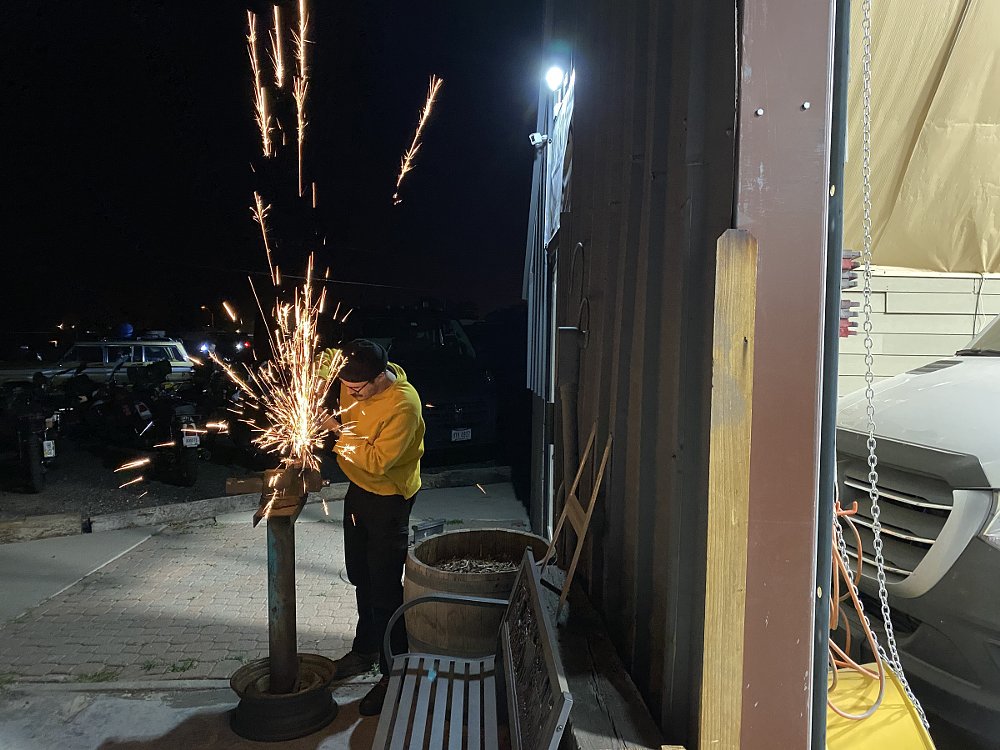
Fighter jets, flats, and campground fixes
Maybe it was best to dive head-first into the Vintage 1000 with a burly first day. The next four days certainly seemed to feel a bit easier. On the cool second morning, we left our campground in Prescott for an easy roll-out on Thumb Butte Road.
From there, we descended into the ominously named Skull Valley, where we'd encounter a new challenge. If yesterday was a day for the rocks, this one was all about the sand. I was pleasantly surprised how my BMW tracked through progressively deeper and longer sand sections on Wagoner Road before topping out on Senator Highway, which really wasn't a highway at all. After an impromptu fly-over by what looked to be an F-35 fighter plane, we descended from the pine forests down into the Saguaro desert and the dusty little town of Cleator.
For good measure, before we reached our campground in Verde Valley, another fellow Airhead rider, Mike, had to stop and fix a flat. Then fix it again when he realized the spare tube was punctured. It might sound strange, but I was excited to see a real-live roadside flat repair. It was a first for me and yet another indoctrination into the fix-anything mentality of the Vintage 1000.
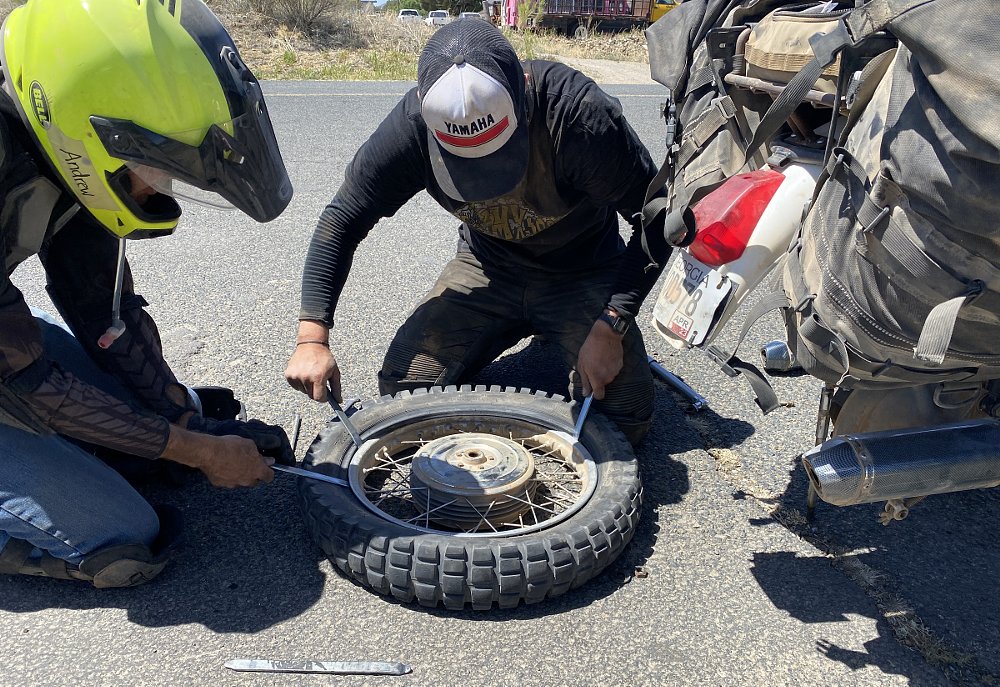
The fixing is almost as important as the riding. If you're a vintage moto nerd like me, sitting around one of these campsites is the best reality TV you could hope for. Ian — the one who lost his hat — had the case cover off of his Triumph 650, trying to figure out why his kickstarter didn't work all day and why his sequential gearbox wasn't all that sequential any longer. Wes had a broken shock on his XT500, so he was trying to source a replacement before the next day. Another Yamaha had an ignition problem. It turned out the points wires were shorting out on the case.
Someone on the Honda Twins forum once told me that "most carburetor problems are electrical problems." Or something along those lines. There's a lot of truth to it. Ignition and electrical gremlins were to blame for a lot of the late-night wrenching, especially the most entertaining: Drew’s Honda SL350.
Thinking his cam had jumped time, he decided to remove the whole engine from the frame and troubleshoot it. To his dismay, the cam chain was right where it should be. The bike's wacky timing was a multi-part mystery that he troubleshooted all week. At one point, in his impossibly thick Georgia drawl, Reed suggested that Drew order up a Predator motor from Harbor Freight for pickup the next morning.
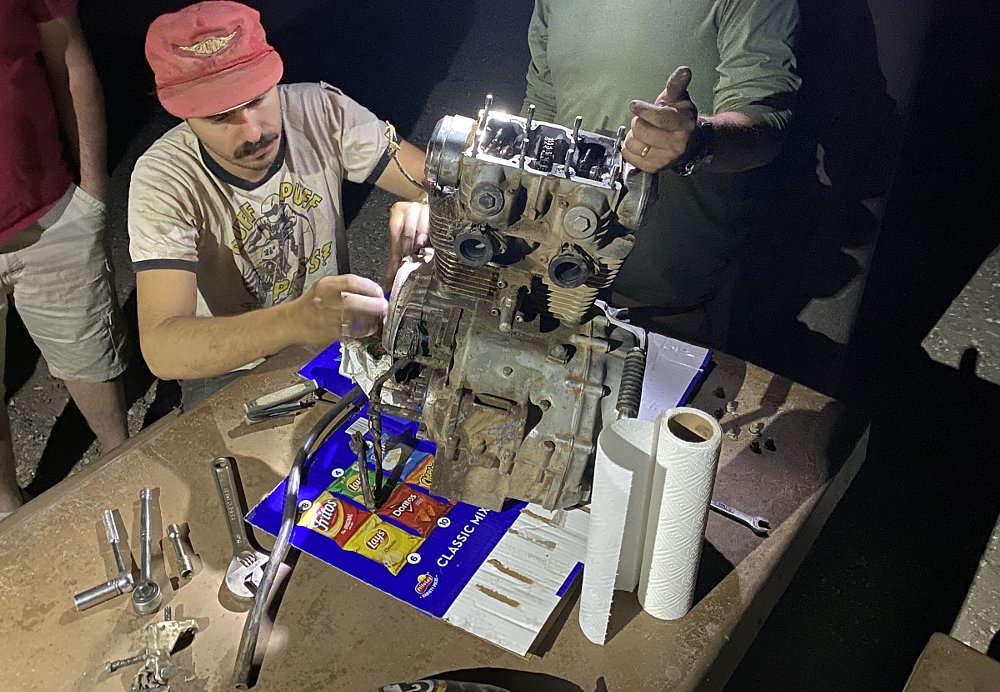
Drew never got back in the saddle that week. In a twist of bad luck, the final night, when he got the 350 running well, he tweaked his knee while kneeling down to work on his bike. No matter, his attitude remained just as positive as it was the night before day one, when he took an angle grinder to his shift lever to make it fit.
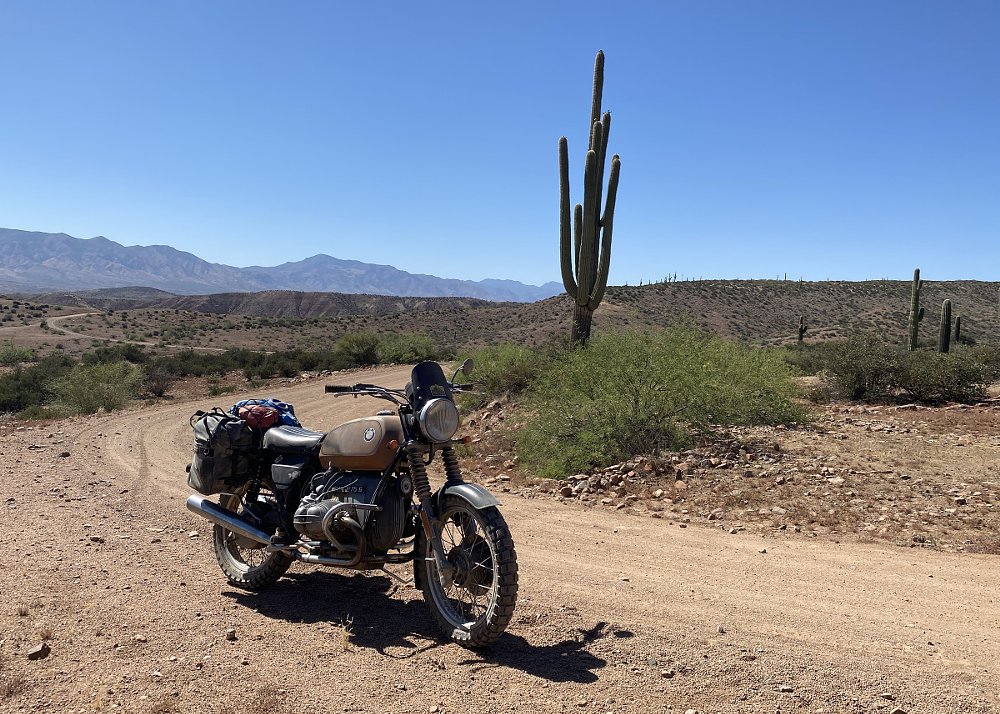
Hitting our stride in the home stretch
It's a shame that he and a couple other riders didn't make it back onto the road for the third day, because this route took in a spectacular stretch of dirt through the Sonoran Desert. While yesterday we'd spotted a few lone Saguaro sentinels, this was a full-on forest of the majestic cacti. By that point, we were a bit hot and weary, in part due to a missed turn that made a 160-mile day more like a 200-miler. Still, the scenery was worth it, and we'd taken a minute to refresh ourselves at a local bar in Jake's Corner before the day ended on the shore of Theodore Roosevelt Lake, just east of Phoenix.
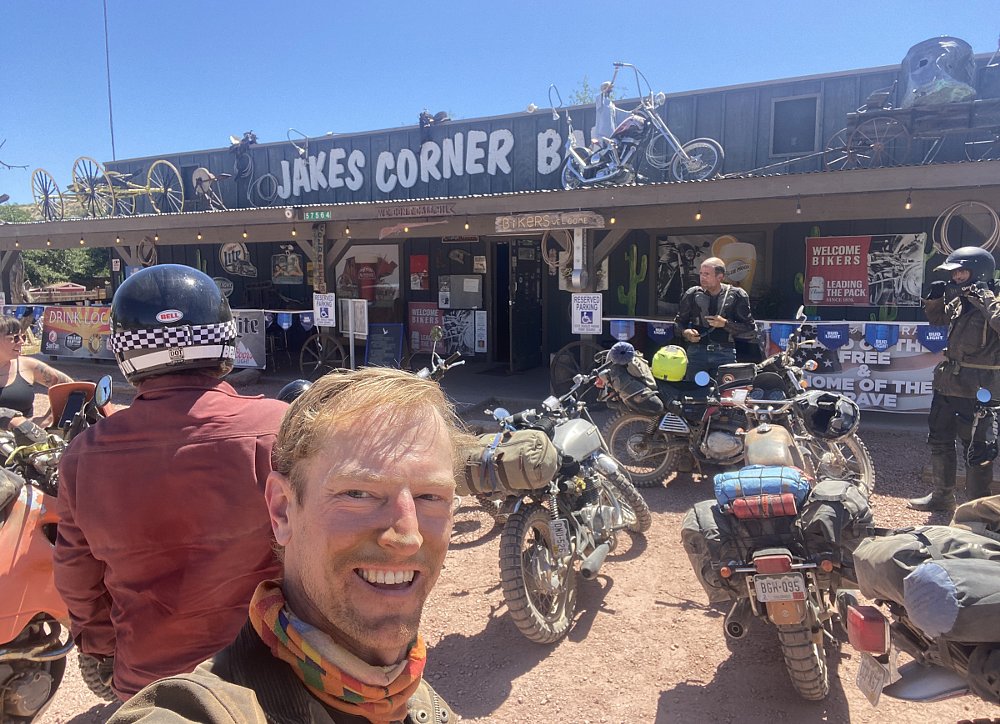
By the final two days, we'd found our rhythm. Camp set-up and tear-down was faster. Anthony kept up just fine without a rear brake. Campground repairs were continuing, but they seemed a bit less drastic — carburetor cleanings and brake rebuilds, not engines out of frames. I might have even stopped noticing the rich smell of a choked old motor in the mornings, which is a little sad, I suppose.
The riding also felt rhythmic. We'd climb out of the hot dry desert into majestic pine forests, passing lizards, javelina, and birds of prey. Then we'd roll over that ridge and find our way into the next valley. Precious few cars interrupted our days, and those that did were impressed by our setups.
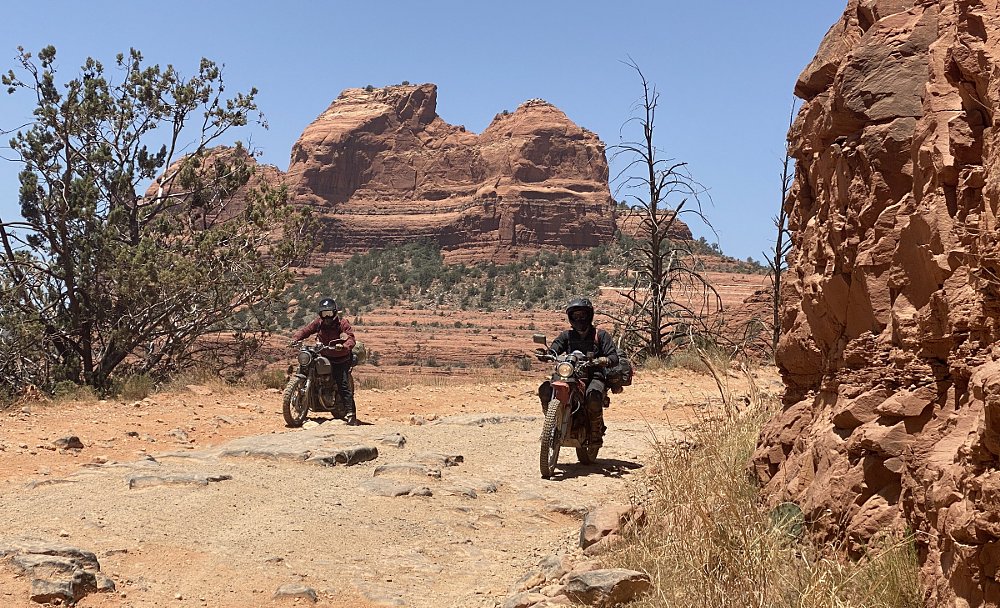
We experienced the most remarkable geography toward the end as we rode along the Mogollon Rim, a 200-mile-long escarpment that cuts through Arizona and into New Mexico. The sheer cliffs offered plenty of views worth stopping for, and our roll-chart skills had improved to the point where we weren't worried about getting caught out in the dark due to a wrong turn.
As we climbed back toward Flagstaff on the sweeping Forest Service roads that spiderweb southeast from the city, I got to thinking about something Anthony had said earlier in the week. In talking with Dawn at camp one night, he had the realization that now he could truly consider himself a motorcyclist. Like me, Anthony is still relatively new to riding motorcycles. I think Dawn discovered it a bit later in life too. Sure, we all rode motorcycles, but were we really motorcyclists?
I think there's a little more to it than just riding five days straight, though. Another remark stuck in my mind and became tangled with the definition of a motorcyclist: "We fix anything," said our group's Southern philosopher, Reed. That combination of self-reliance, mechanical competence, creativity, and a healthy supply of JB Weld, lives near the center of this notion of being a motorcyclist.
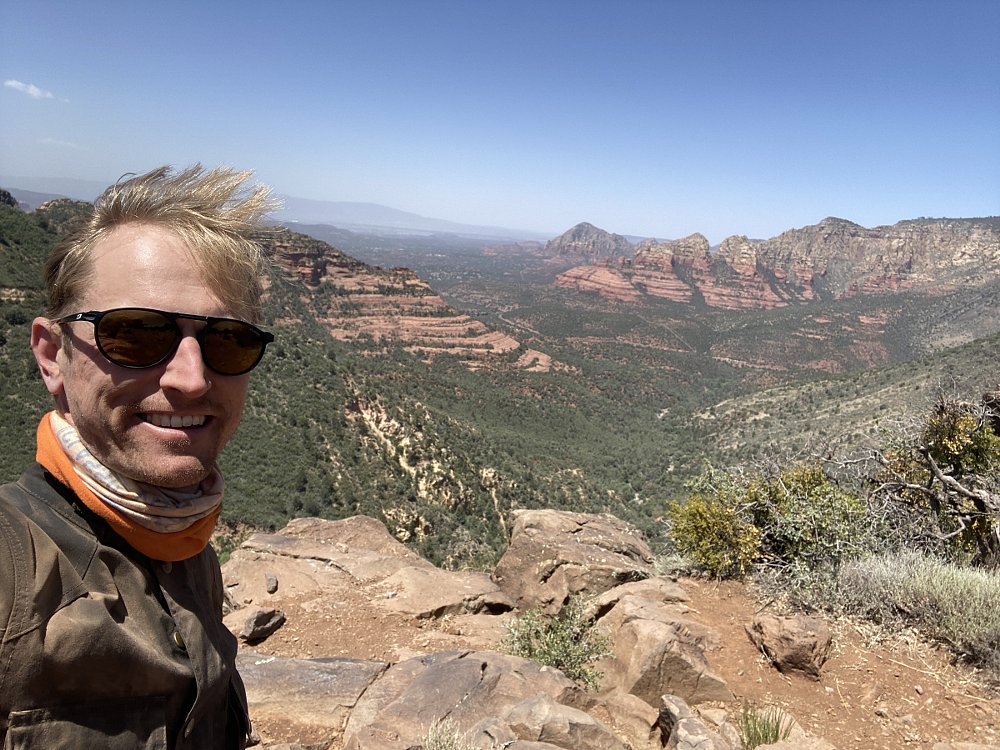
More than anything, that's what I took away from the Vintage 1000. It's about riding, sure. But it's also about the ambition to try something that's outside your comfort zone and the confidence to find a way to make it work — to fix anything. Best of all, in this case, you do it with a group of about 30 like-minded riders. They love these old bikes as much as you do, no matter how ill-suited or ornery they can be. And you best believe that someone in the campground can help you get back on the road, if you need it.







